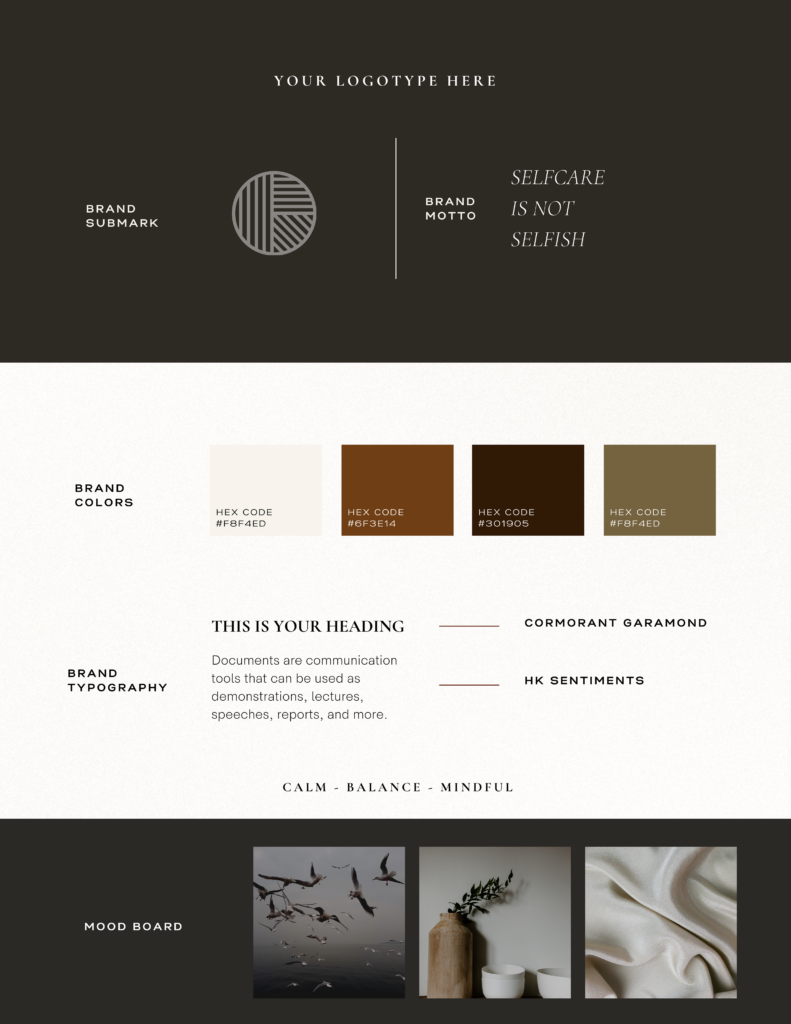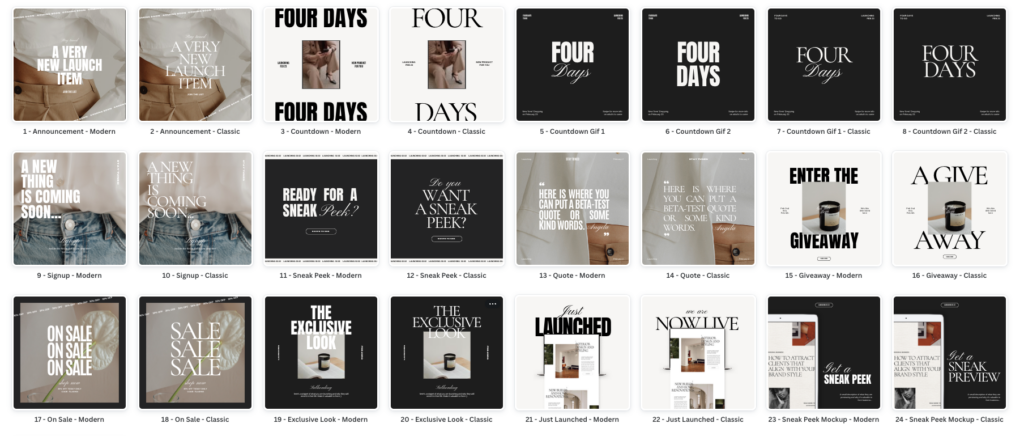In a world bombarded with information and saturated with brands vying for attention, it’s no wonder that consumers are seeking simplicity and clarity. The concept of minimalism has transcended physical spaces and seeped into various aspects of our lives, including brand identity. Brand minimalism, not to be confused with the Sad Beige phenomenon, is all about stripping away the excess and focusing on essential elements that create a lasting impact.
The Essence of Brand Minimalism
At its core, brand minimalism embodies the idea of “less is more.” It aims to communicate a brand’s message effectively by eliminating unnecessary noise and distractions. By embracing simplicity, brands can create a more memorable and authentic experience for their audience. Minimalist branding relies on clean lines, negative space, limited color palettes, and concise messaging to convey its core values and offerings.

Refining Your Brand Identity
Brand minimalism begins with thoroughly examining your brand’s identity. Start by identifying your unique selling proposition (USP) and distilling it down to its essence. Ask yourself what sets your brand apart and focus on clearly communicating that. This process involves defining your brand’s mission, values, and target audience to create a strong foundation for minimalistic design and messaging.
Actionable Prompts:
- What makes your brand truly unique? Define your unique selling proposition (USP) in a single sentence.
- What is the core mission of your brand? Simplify it into a brief, memorable statement.
- Who is your ideal audience, and what matters most to them? Create a clear target audience profile.
- How does your brand help or solve problems for your audience? Summarize your brand’s value in a few words.
- How would you describe your brand’s values in three key principles?
For help with defining your brand’s core values and purpose, download this free brand clarity workbook to help you nail down your brand strategy.
Streamlined Visual Identity
Visual elements are essential in minimalist branding. Opt for simple, clean, and uncluttered designs that reflect your brand’s core identity. This includes a minimalist logo, typography, and color palette that evoke a sense of elegance and sophistication. Remember, a well-designed logo is not just visually appealing; it should also be versatile and scalable across different platforms and mediums.
Actionable Prompts:
- Examine your current logo and design elements. Can you simplify them further while retaining their essence?
- Are there any unnecessary elements in your branding that can be removed to create a cleaner look?
- Evaluate your color palette. Could you reduce it to a few key colors that best represent your brand?
- Ensure that your logo is adaptable and looks good across various platforms and sizes.
- How would you describe your brand’s visual identity in three words?
Visual Identity Moodboard
Simplified Style Guide


Minimalist Messaging
When it comes to messaging, brand minimalism calls for clarity and brevity. Craft a compelling tagline or mission statement that captures the essence of your brand in a concise and memorable way. Avoid jargon and convoluted language, opting for straightforward and easy-to-understand communication. Minimalist messaging allows your audience to quickly grasp your brand’s value proposition and connect with it on a deeper level.
Actionable Prompts:
- Craft a tagline or mission statement in 10 words or less that encapsulates your brand’s essence.
- Review your marketing materials and messages. Are there any unnecessary details that can be removed?
- Write a brief elevator pitch for your brand that can be delivered in 30 seconds or less.
- Avoid industry jargon and complex language in your communications.
- Can you summarize your brand’s core message in one sentence?
Consistency and Cohesion
Consistency is key for a minimalist brand strategy. Make sure your visuals, messages, and the overall brand experience stay in sync across everything – your website, social media, packaging, and how you interact with customers. Consistency builds trust, reinforces brand recognition, and distinguishes your brand in a crowded marketplace.
Actionable Prompts:
- Review your website, social media profiles, and other brand touchpoints. Do they all convey the same message and visual style?
- Create brand guidelines to ensure consistency in logo usage, colors, and typography.
- Consider the overall experience customers have with your brand. Is it uniform across all interactions?
- Make a list of all the ways your brand communicates with customers and ensure they align in messaging and aesthetics.
- How do you want your audience to feel when they encounter your brand? Ensure this emotional response is consistent.
Embracing White Space
White space, also known as negative space, is a fundamental aspect of minimalist design. It provides visual breathing room and allows the essential elements of your brand to stand out. Embracing white space in your website layout, advertisements, and marketing collateral creates an elegant and sophisticated aesthetic, drawing attention to your key messages and enhancing overall user experience.
Actionable Prompts:
- Examine your website layout and marketing materials. Is there enough white space to allow key elements to stand out?
- Experiment with simplifying your designs by removing unnecessary elements or content.
- Assess the balance between content and white space. Does it create a pleasing visual experience?
- Think about the main message you want to convey. Can you use white space to draw attention to it?
- How would you describe the role of white space in your brand’s design in one sentence?
Product Launch Social Media Templates
Showing Visual Consistency and Use of White Space

The Impact of Brand Minimalism
Brand minimalism resonates with today’s consumers who seek simplicity, authenticity, and meaningful connections. By removing clutter and focusing on the essentials, minimalistic brands create a sense of trust, professionalism, and confidence. Moreover, a minimalist approach can differentiate your brand in a saturated market, making it more memorable and recognizable.
In today’s busy and overstimulated culture, brands that embrace minimalism and simplicity stand out from the crowd. By stripping away the excess and focusing on essential elements, brands can create a clear and impactful identity. Brand minimalism is not just a design trend but a strategic approach that fosters authenticity, simplicity, and strong brand recognition. So remember that less is often more when it comes to building an authentic, memorable brand.


